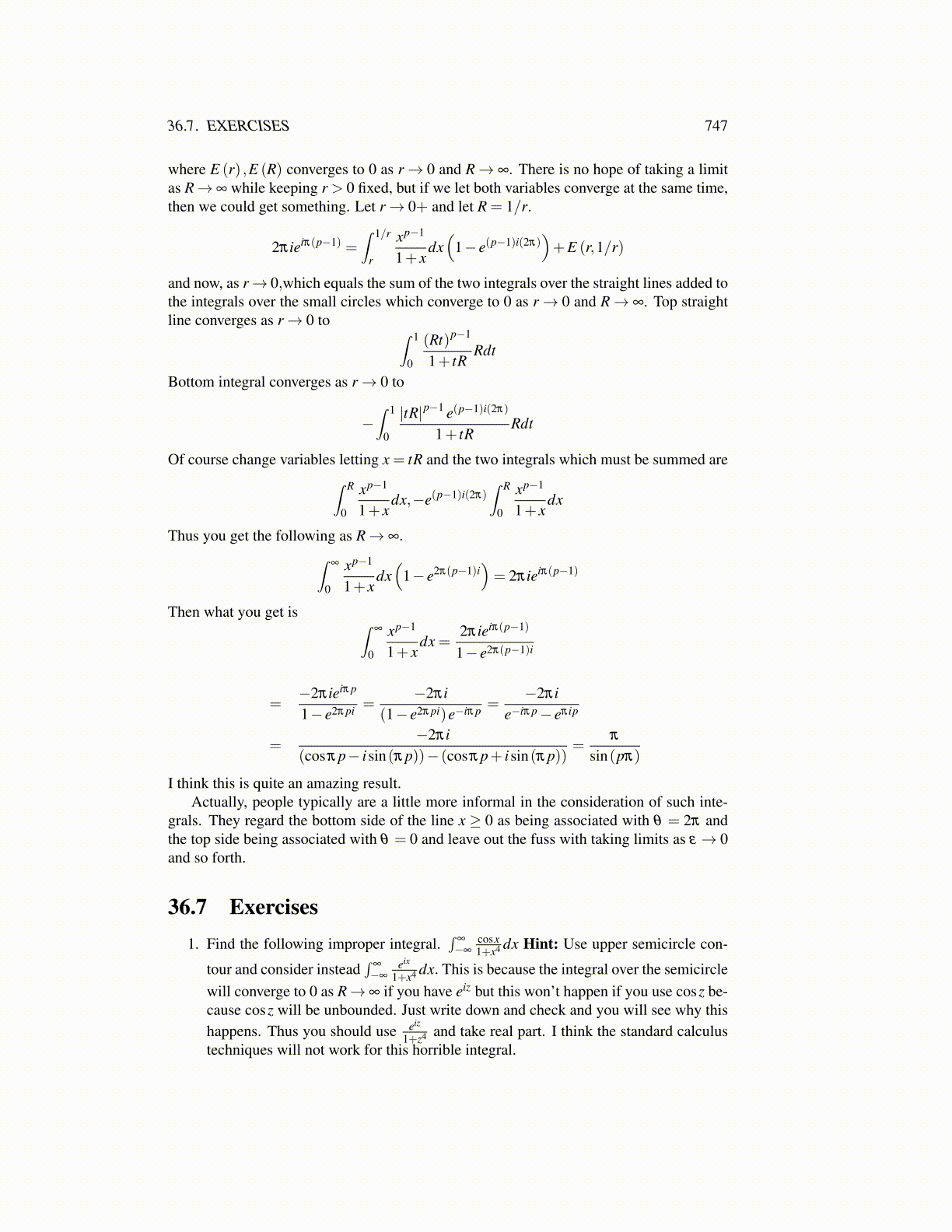
36.7. EXERCISES 747
where E (r) ,E (R) converges to 0 as r→ 0 and R→ ∞. There is no hope of taking a limitas R→∞ while keeping r > 0 fixed, but if we let both variables converge at the same time,then we could get something. Let r→ 0+ and let R = 1/r.
2πieiπ(p−1) =∫ 1/r
r
xp−1
1+ xdx(
1− e(p−1)i(2π))+E (r,1/r)
and now, as r→ 0,which equals the sum of the two integrals over the straight lines added tothe integrals over the small circles which converge to 0 as r→ 0 and R→ ∞. Top straightline converges as r→ 0 to ∫ 1
0
(Rt)p−1
1+ tRRdt
Bottom integral converges as r→ 0 to
−∫ 1
0
|tR|p−1 e(p−1)i(2π)
1+ tRRdt
Of course change variables letting x = tR and the two integrals which must be summed are∫ R
0
xp−1
1+ xdx,−e(p−1)i(2π)
∫ R
0
xp−1
1+ xdx
Thus you get the following as R→ ∞.∫∞
0
xp−1
1+ xdx(
1− e2π(p−1)i)= 2πieiπ(p−1)
Then what you get is ∫∞
0
xp−1
1+ xdx =
2πieiπ(p−1)
1− e2π(p−1)i
=−2πieiπ p
1− e2π pi =−2πi
(1− e2π pi)e−iπ p =−2πi
e−iπ p− eπip
=−2πi
(cosπ p− isin(π p))− (cosπ p+ isin(π p))=
π
sin(pπ)
I think this is quite an amazing result.Actually, people typically are a little more informal in the consideration of such inte-
grals. They regard the bottom side of the line x ≥ 0 as being associated with θ = 2π andthe top side being associated with θ = 0 and leave out the fuss with taking limits as ε → 0and so forth.
36.7 Exercises1. Find the following improper integral.
∫∞
−∞
cosx1+x4 dx Hint: Use upper semicircle con-
tour and consider instead∫
∞
−∞
eix
1+x4 dx. This is because the integral over the semicirclewill converge to 0 as R→∞ if you have eiz but this won’t happen if you use cosz be-cause cosz will be unbounded. Just write down and check and you will see why thishappens. Thus you should use eiz
1+z4 and take real part. I think the standard calculustechniques will not work for this horrible integral.